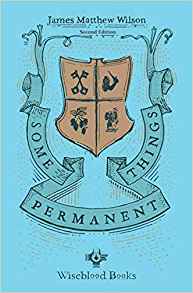For the past four or five years, poetry has been enjoying a significant resurgence. But it is a resurgence only when broadly defined, and that means “when including the Internet.” The Guardian recently discussed the rise of a new generation of poets, originating on the Internet and especially Instagram. Instagram poets, when they collect and publish their work in print form, can sell tens of thousands of copies. Rupi Kaur’s Milk and Honey sold almost half a million copies.
Not even Billy Collins sells half a million copies of a poetry book.
The Guardian article goes on to point out that the Instagram poets have largely bypassed the familiar poetry gatekeepers— the poetry magazines, poetry societies, and academics who often serve as critics. These poets don’t need Poetry Magazine or the Academy of American Poets to help them sell tens of thousands of copies of their poetry books. The old order somewhat sniffs at the transience of the Internet, while the new order runs rather merrily all the way to the bank. The resurgence in poetry has barely touched the traditional poets. We haven’t seen this kind of upheaval in poetry since the modernist poets of the 1910s and 1920s upset the then-traditional poetry cart.
All of this was swirling in my head as I read Some Permanent Things by James Matthew Wilson. The title alone seems almost anti-Internet. Is there anything left in culture that’s really permanent? First published in 2014, this collection is in a second edition, which allowed Wilson to rearrange a few poems, rewrite several, and structure the volume to add to understanding. (The original edition is available on Amazon; the revised edition is at the Wiseblood Books website.)
Some months ago, I read Wilson’s The Hanging God: Poems, and confessed here that the collection left me feeling undone. These are not the kinds of poem you find on Instagram, but neither are they the kinds of poems you find in the collections of many of the poets writing and traditionally publishing today. They are written with rhyme and meter. They are filled with classical, philosophical, and historical references. Most importantly, they are written in highly accessible English, or, as I said before, as if Milton or the Elizabethans used our contemporary language.
The same assessment applies to Some Permanent Things. Wilson has structured the second edition into four sections (the first had six): “The Violent and the Fallen,” “Four Verse Letters,” “La Rochefoucauld’s Ghost,” and “The Christmas Preface.”
The 20 poems of “The Violent and the Fallen” address memories of childhood and teen years, decaying neighborhoods in college towns, the wake of a beloved priest, the dead memorialized by a cemetery monument, a baby daughter, and other subjects that rarely if ever last in their permanent form. The title poem is found in this section, and I’ve reread it at least five times, finding new layers of meaning with each reading.
This poem from the first section is deceptively simple. It begins with “a coil of fabric and lost hair,” becomes a love poem and then transforms itself into a meditation.
Living Together

By trimmed nails, dry husks of dead beetles, bottle
Caps flipped into a corner of our beers,
Where chance has gathered it with dust to mottle
And rise in the bright air from off the river.
I stretch out near the open window, watch
This light particulate with just a quiver
Of frank revulsion. Though I cannot touch
You now—out shelving books to pay the rent—,
The skein of dust before my passive eye
Is your self with my own absently blent
In life’s terse record: its sloughed but faithful sty.

James Matthew Wilson
The second section is four long and moving verse letters, written to Wilson’s father, mother, and two brothers. It’s followed by the 21 poems of “La Rochefoucauld’s Ghost” (Francois La Rochefoucauld is the 17th century author of maxims, memoirs, and letters). The final section, “The Christmas Preface,” includes six poems about the Advent and Christmas seasons.
Wilson has published eight books, including two poetry collections, Some Permanent Things (2014) and The Hanging God (2018); The Catholic Imagination in Modern American Poetry (2014); The Fortunes of Poetry in an Age of Unmaking (2015); and The Vision of the Soul: Truth, Goodness, and Beauty in the Western Tradition (2017).
I don’t know if the Instagram poets will be read a century from now, or even remembered, but I suspect that poems of Some Permanent Things will be. These poems are not of the moment. They tell us to look backward at history and forward to eternity. They speak to the rhyme and meter that is not only a hallmark of formalist poetry but also in life. Read a collection like this and be challenged and changed.
Related:
Poets and Poems: James Matthew Wilson and “The Hanging God”
Photo by Michael Leckman, Creative Commons, via Flickr. Post by Glynn Young,author of Poetry at Work and the novels Dancing Priest, A Light Shining, Dancing King, and the recently published Dancing Prophet.
__________________________

“I require all our incoming poetry students—in the MFA I direct—to buy and read this book.”
—Jeanetta Calhoun Mish
- “Horace: Poet on a Volcano” by Peter Stothard - September 16, 2025
- Poets and Poems: The Three Collections of Pasquale Trozzolo - September 11, 2025
- Poets and Poems: Boris Dralyuk and “My Hollywood” - September 9, 2025

[…] Poets and Poems: James Matthew Wilson and Some Permanent Things […]